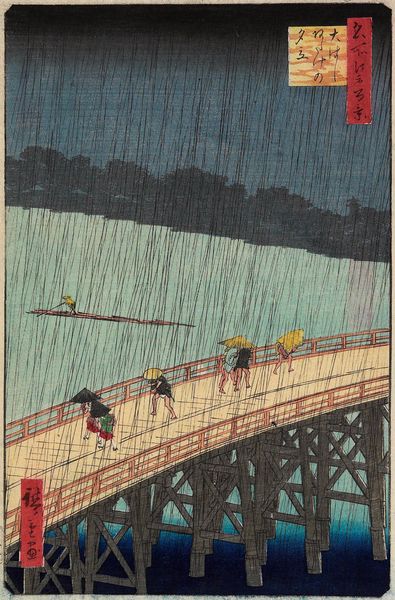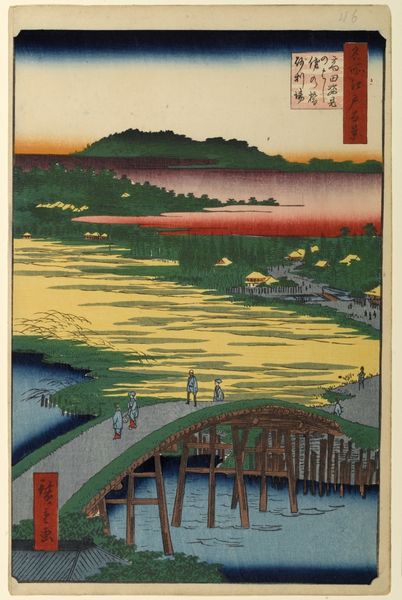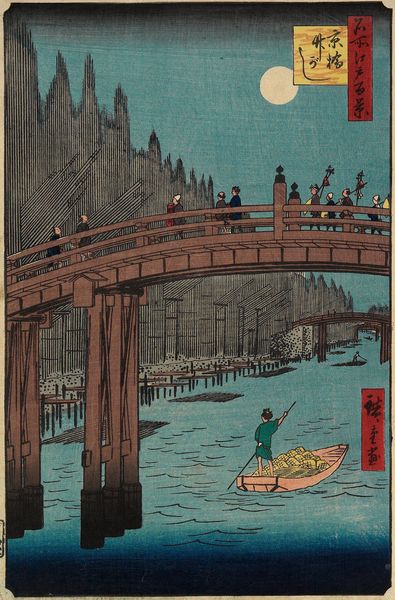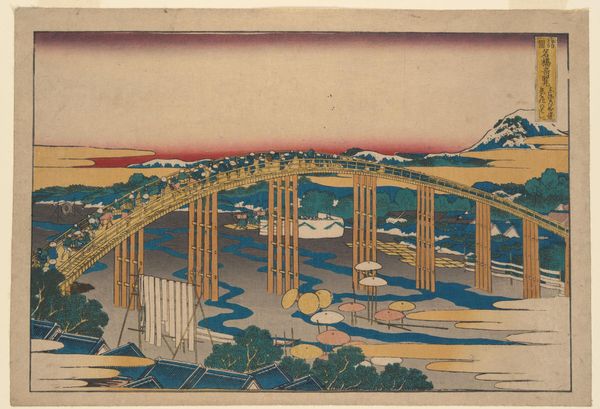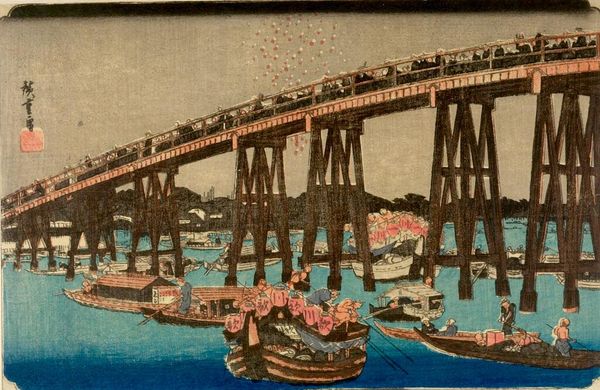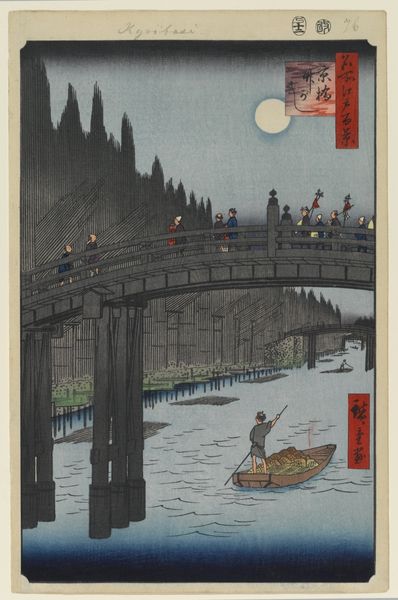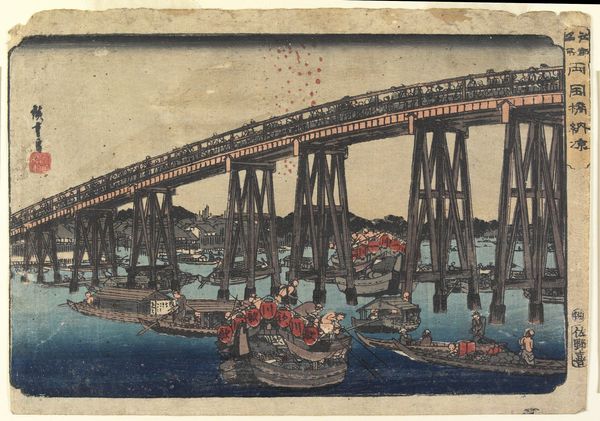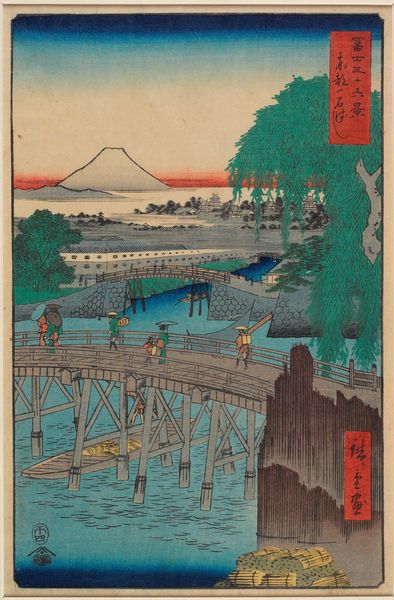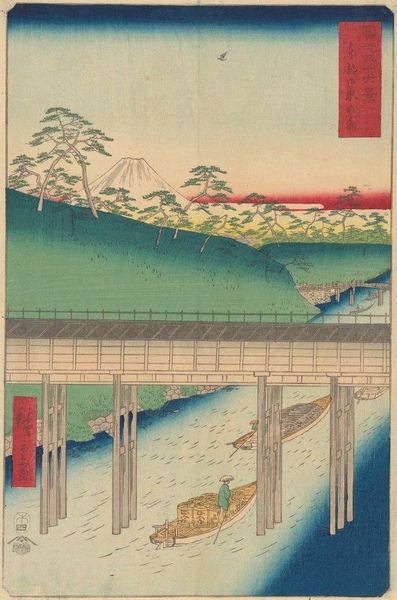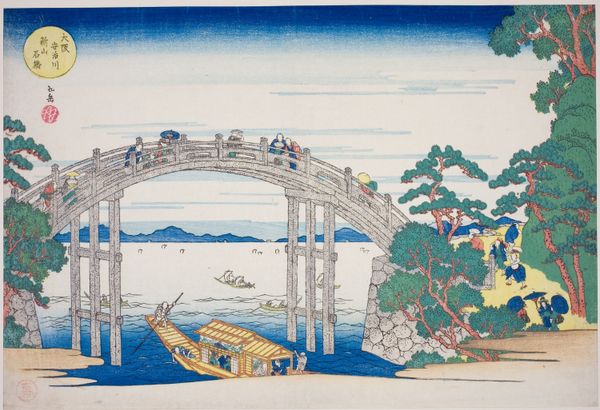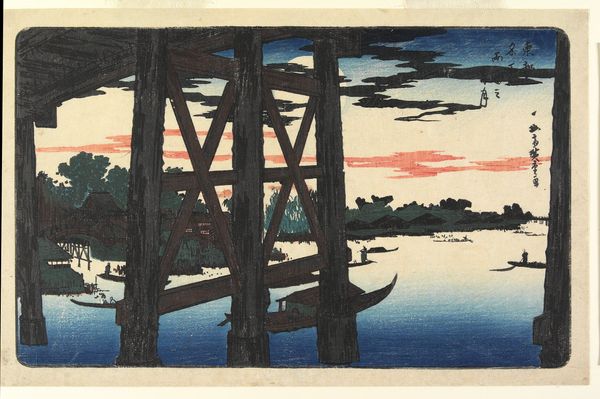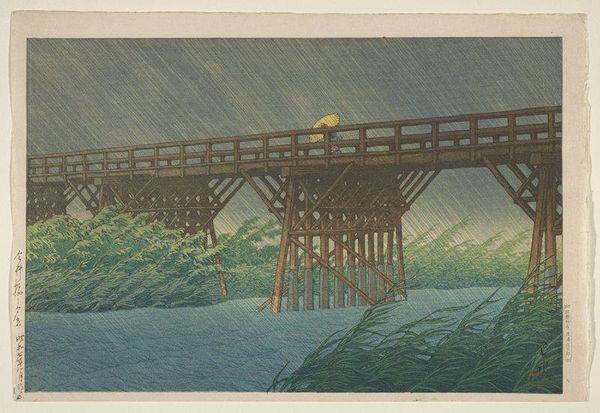
painting, oil-paint
#
painting
#
oil-paint
#
landscape
#
figuration
#
oil painting
#
japonisme
Copyright: Public Domain: Artvee
Editor: Van Gogh's "Bridge in the Rain," created in 1887 using oil paint, feels almost like a snapshot, capturing a fleeting moment. I’m really drawn to the contrast between the vibrant colors and the somber, almost melancholic atmosphere. How do you interpret this work, especially considering its Japanese influences? Curator: This piece offers a fascinating glimpse into Van Gogh's engagement with Japonisme, a movement that saw European artists drawing inspiration from Japanese art and culture. We see it reflected not just in the subject matter but also in the flattened perspective and the use of bold outlines. But let’s also consider the socio-political context. What do you make of the fact that Van Gogh, a European artist, is representing a Japanese scene? What kind of cultural exchange, and potential cultural appropriation, is taking place here? Editor: That's a great point. I hadn't thought about it in terms of appropriation. So, beyond just admiring the aesthetic, we also need to critically examine the power dynamics at play in this cross-cultural exchange. Curator: Precisely. It’s essential to understand that Japonisme wasn't a neutral appreciation but happened within a landscape of colonialism and unequal power relations. How does this knowledge influence your interpretation of the work’s melancholic mood? Does it perhaps add a layer of complexity, even discomfort, to the beauty of the image? Editor: Definitely. Thinking about it now, it's not just a pretty picture. It’s a product of its time, reflecting both artistic admiration and potentially problematic power dynamics. The melancholy now feels more nuanced, perhaps tinged with the recognition of these inherent imbalances. Curator: Exactly! By interrogating the historical and social context, we can unpack layers of meaning that might otherwise remain hidden. It challenges us to engage critically with art, considering not only its aesthetic qualities but also its relationship to broader issues of identity, power, and representation. Editor: That makes so much sense. Thanks, I’ll definitely be looking at art with a different lens now. Curator: And that’s exactly the point – art should spark critical thought and reflection!
Comments
No comments
Be the first to comment and join the conversation on the ultimate creative platform.
